Film Mood Board Template
Crafting a Cinematic Aesthetic
Whether you’re working on a Western, romance, or comedy, using a film mood board template is an essential step in defining the visual identity of your project. A well-structured film mood board acts as a creative compass, ensuring consistency in tone, color palette, and overall aesthetic.
StudioBinder’s mood board creator empowers you with the essential tools to gather and share your creative concepts with your team. The platform ensures everyone is visually aligned and working towards the same vision.
Steps to create a film mood board
Step 1
1. Create a blank mood board
A film mood board template serves as a vital reference for directors, cinematographers, production designers, and other key creatives. It ensures that each department is aligned with the project’s aesthetic vision.
This is how you kickstart your film moodboard creation with StudioBinder. We recommend creating an overall mood board for tone and atmosphere. However, you may also want to create additional film boards to share with specific departments. For example, you can create mood boards for various mise-en-scene elements such as:
- Cast
- Lighting
- Set design and production design
- Wardrobe
- Props
- Special Effects
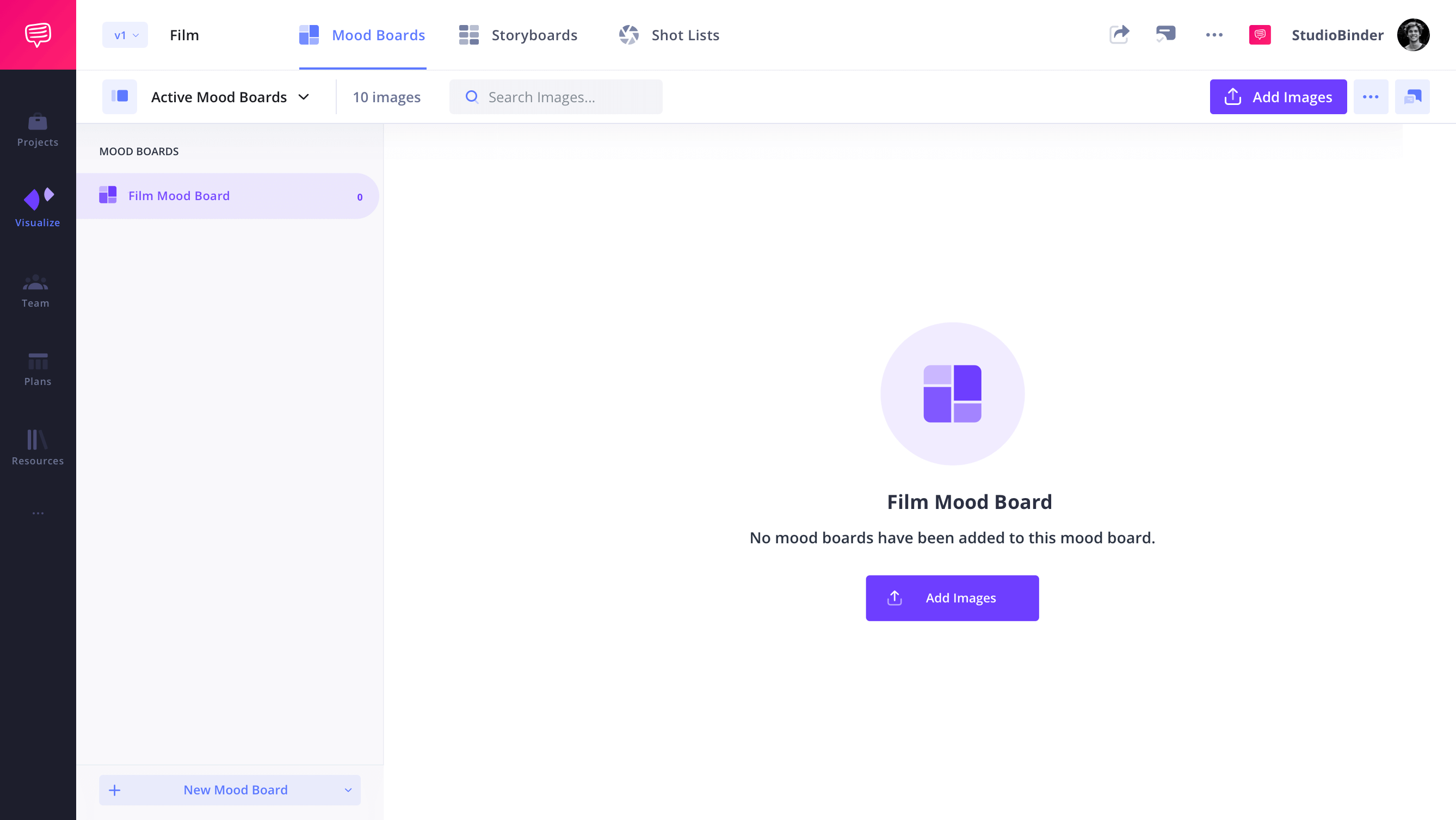
How to do this in StudioBinder
- From the project page, select Mood Board.
- Create mood boards for every important category.
Step 2
Gather your images
Curate a collection of images and photos that align with your vision. These can include:
- Stills from films
- Location scout photos
- Images from movie studios and prop rental sites
- Color swatches and reference materials
Once you have a collection of images, you can upload them to their respective film mood boards in StudioBinder. This is an ongoing process. As you find more images, simply continue updating your mood boards.
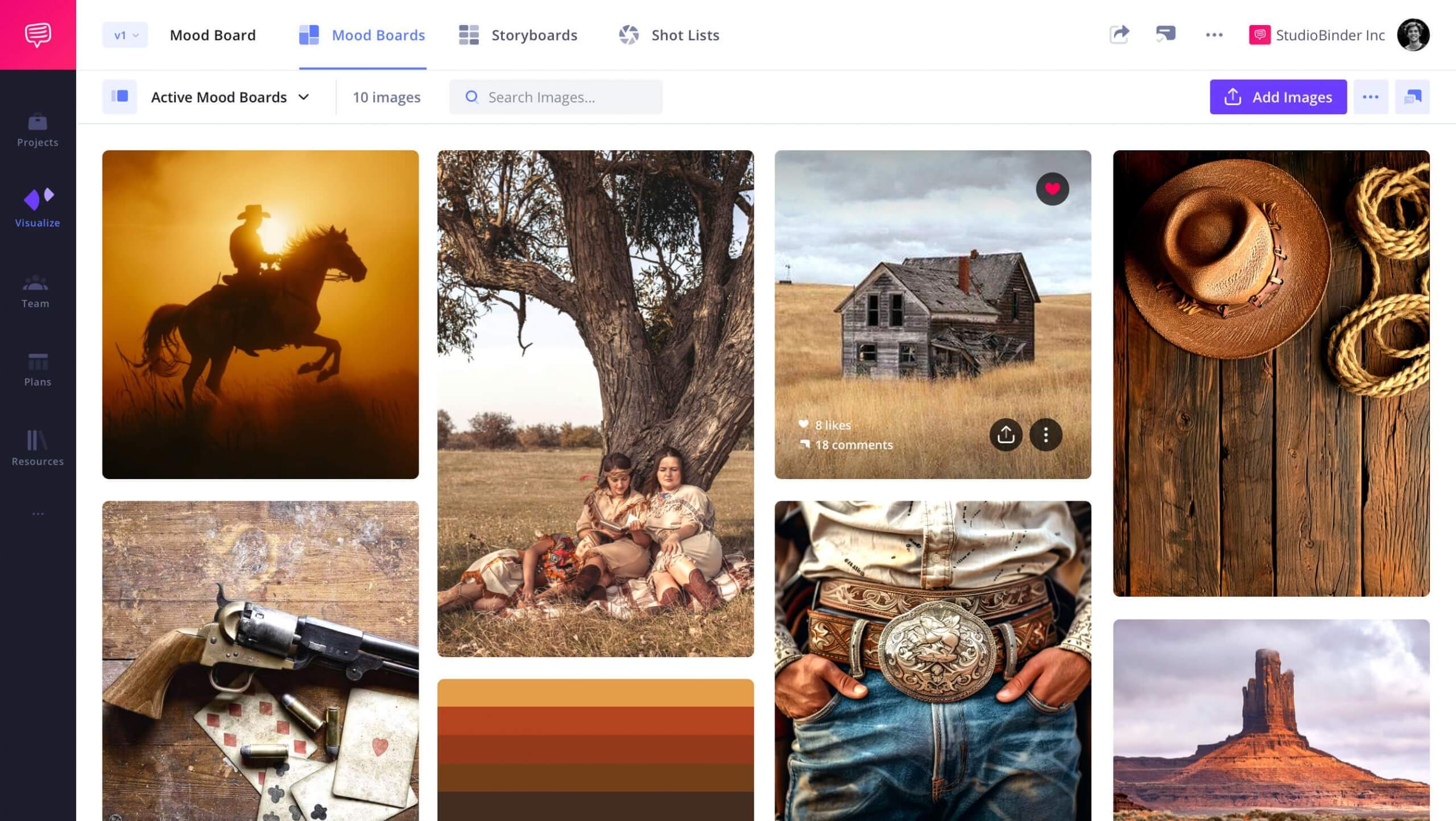

How to do this in StudioBinder
- Search the web for inspiration and save relevant images.
- Upload images to your film mood board.
Step 3
Fine-tune your images
When it comes to setting a cohesive visual reference, consistency is crucial. Just because you may have a photo that has the right elements (e.g., location), doesn't mean it strikes the right tone or atmosphere. And in some cases, you may need to crop out the elements you don't want to focus on.
StudioBinder provides a range of editing tools to fine-tune each image. Enhance images with pre-set filters, adjust brightness, contrast, saturation, exposure, and add annotations to achieve the desired effect.
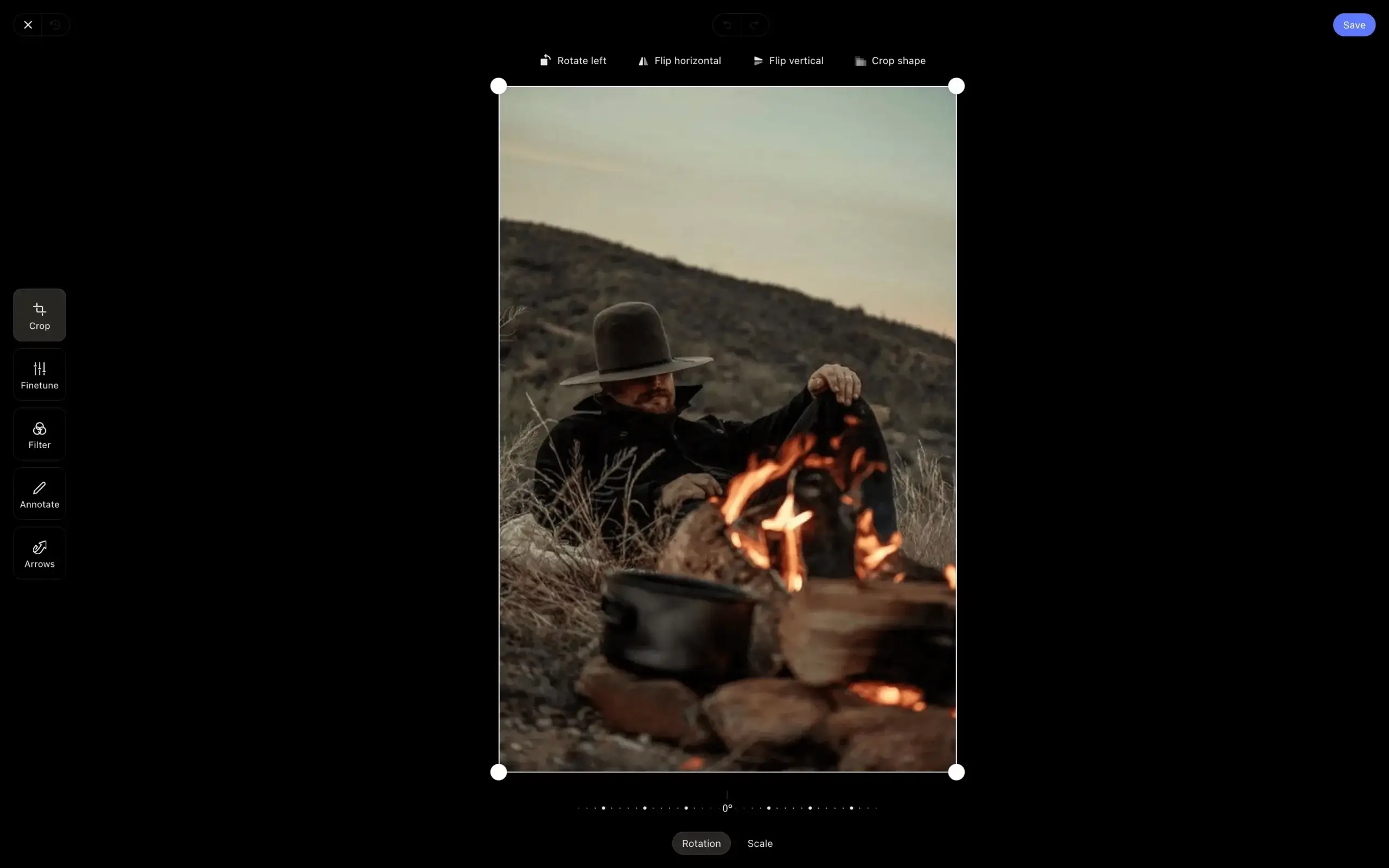

How to do this in StudioBinder
- Open the image from the mood board.
- Select Edit.
- Crop, annotate, or fine tune your image settings.
Step 4
Arrange your images to tell a story
Layout matters. A well-organized moodboard template helps communicate your vision more effectively. Arrange images based on relationships between elements such as cinematography, characters, and locations.
You can also adjust the size of images to highlight their importance and relationships to each other.
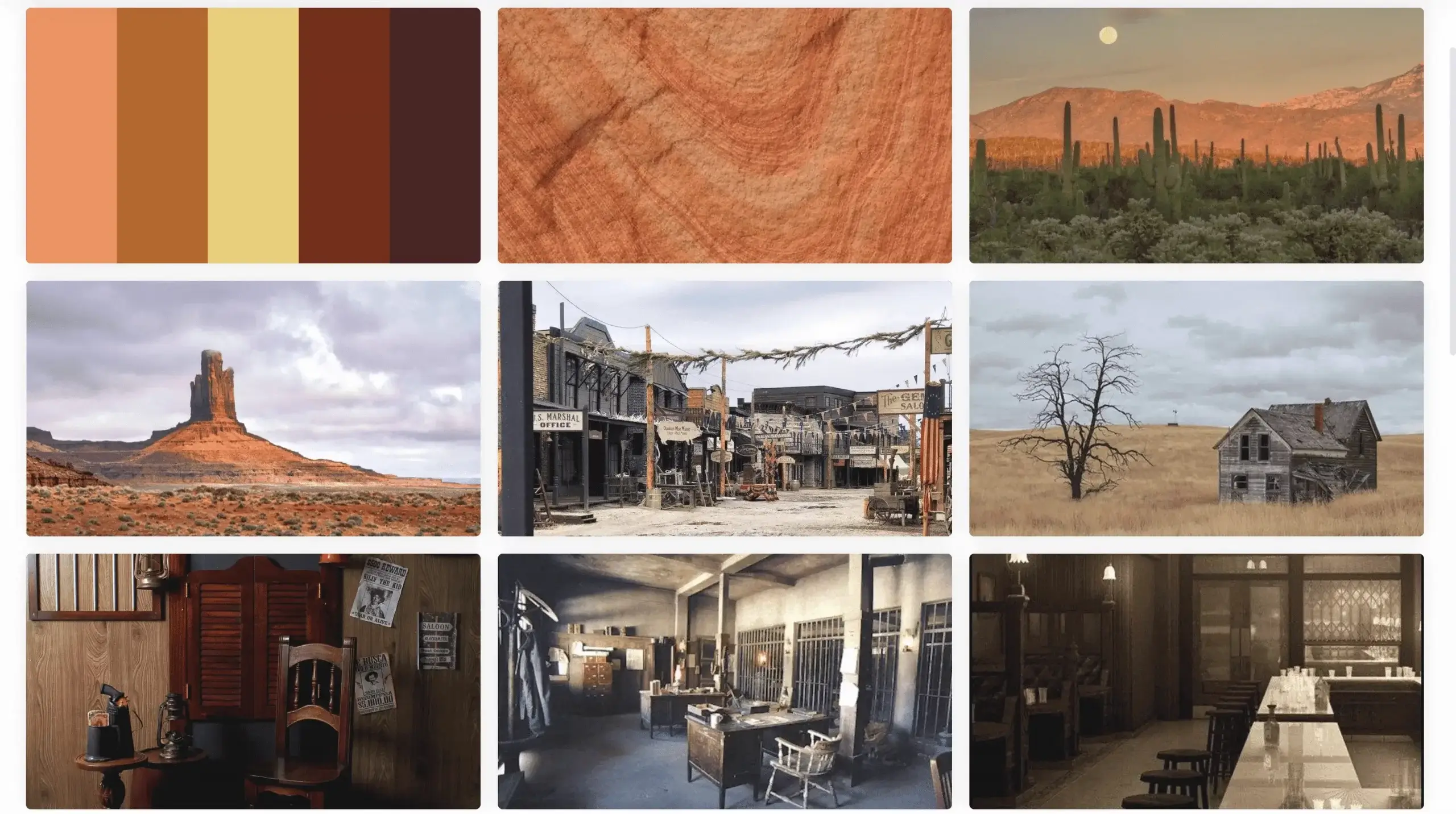

How to do this in StudioBinder
- Consider "zones" to group images in proximity.
- Drag to rearrange images into a layout that tells a story.
Pro Tip — Curate images based on different film elements such as cinematography, locations, characters, lighting, production design, composition, etc.
Step 5
Share for feedback and collaboration
Filmmaking is a collaborative process. By sharing your film boards, you can gather input from key stakeholders and ensure everyone is working toward the same vision.
With comments, anyone can contribute and provide feedback, fostering a collaborative creative environment. You can also provide edit access to outside collaborators so they can upload their own images to your mood boards, making the entire process very fluid and engaging.
Not only does this make for a richer tapestry of ideas, but it allows for collaborators to start taking ownership over their department, all while fostering (and enhancing) the initial vision you set forth.
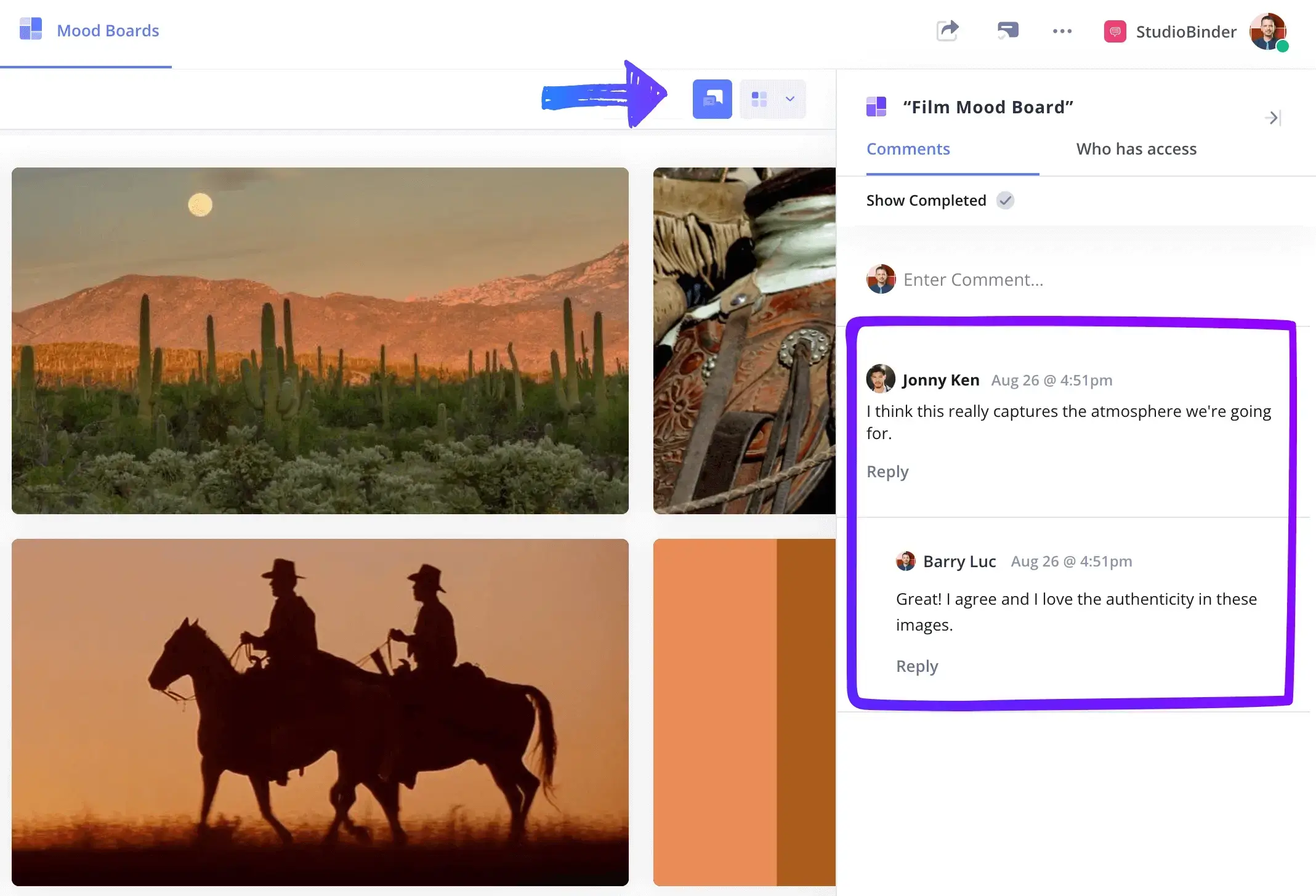

How to do this in StudioBinder
- Create a View Only link or Invite Collaborators to work with you.
- Use the Comments sidebar to review feedback.
Conclusion
Film mood board complete
A well-crafted film mood board template brings your vision to life. Whether you’re designing a movies website, pitching a project, or working within a film production company, a strong visual foundation ensures success.
This film mood board template is one of many templates you can use. Browse all of our other Mood Board Templates.